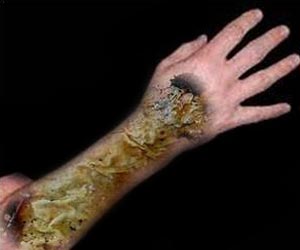Ozempic and GLP-1 drugs are life-changing and can help to reduce weight, but they may cost you muscle and bone. Learn how to protect your body while shedding pounds.

- Up to 30% of weight lost with GLP-1 drugs like Ozempic comes from muscle and bone mass, not fat
- Protein intake, strength training, and key nutrients like calcium and Vitamin D help mitigate muscle and bone loss
- Maintaining muscle mass is vital for blood sugar control, mobility, and overall health during significant weight loss
Wegovy, Ozempic, and Mounjaro weight reduction medications are improving the lives of those suffering from obesity and related conditions, earning them revolutionary status (1). Research suggests that they have the potential to improve quality of life by lowering the risk of dementia, regulating alcohol addiction, and boosting heart and kidney health.
Advertisement
Do Weight Loss Medicines Have Side Effects?
However, some recent studies have warned consumers about potential long-term negative effects of these medications. There may also be certain negative consequences of dropping weight quickly that are not limited to the Ozempic buttocks, face, or personality, but extend well beyond these.
People taking GLP-1-based treatments like semaglutide and tirzepatide have been reported to drop up to 20% of their body weight, which can be life-changing for many.
According to studies, these medicines are extremely efficient in weight loss. In clinical trials of obese patients, these medicines resulted in weight loss of up to 20% in some cases (2). However, studies caution that not all of this weight is fat. Muscle and bone loss appear to be a significant contributing factor.
According to research published in The Lancet Diabetes & Endocrinology, muscle loss from these drugs ranged between 25% and 39% of overall weight reduction over 36-72 weeks (3). The research noted that this significant muscle loss can be mostly due to the extent of weight reduction, rather than an independent effect.
A study published in Diabetes, Obesity, and Metabolism indicates lean mass decreases of 40% to 60% as a proportion of total weight lost (4), while other studies reveal lean mass reductions of 15% or less of total weight loss.
According to studies, up to one-third of the weight loss comes from “non-fat mass,” which includes muscle and bone mass. This type of muscle and bone mass loss can occur when people follow severe diets or have weight loss surgery (5).
Advertisement
Role of Muscle and Bone Mass on Overall Health
Losing muscle and bone mass can have far-reaching consequences beyond an increased risk of falls and fractures or fears of reduced mobility in old age. Muscle can assist control blood sugar, so it’s no surprise that persons with low muscle mass struggle with blood sugar control and metabolic health. Uncontrolled sugar levels can lead to the development of Type 2 diabetes, which has serious problems such as blindness, nerve damage, foot ulcers, heart attacks, and strokes.
It is critical to maintain healthy bone and muscle health in order to do daily tasks with ease. In cases of significant weight loss, the process of removing old bone and forming new bone might be slowed, potentially leading to bone mass loss.
Advertisement
How to Maintain Muscle and Bone Mass When Taking Ozempic and Other GLP-1 Medications?
Consume Extra Protein
Protein is a vital component for muscle maintenance. To maintain muscle mass while taking GLP-1 medicines, aim for 1.2 to 1.6 grams of protein per kilogram of body weight daily. Include meat, poultry, eggs, fish, dairy, nuts, seeds, legumes, beans, and soy products in your diet.
Strength Training and Exercise
Being on weight loss medicines does not mean that you should abandon your fitness program. Regular weight-bearing workouts, such as resistance training or bodyweight exercises, serve to maintain muscle strength and bone density. Walking, hiking, and running improve bone health by encouraging bone remodeling and density.
Calcium & Vitamin D Suppelements
These nutrients are essential for bone health. Aim for at least 1,000 mg of calcium and 800-1,000 IU of vitamin D each day, either through diet or supplements.
References:
- Wegovy (semaglutide): a new weight loss drug for chronic weight management
(Singh G, Krauthamer M, Bjalme-Evans M. Wegovy (semaglutide): a new weight loss drug for chronic weight management. J Investig Med. 2022 Jan;70(1):5-13. doi: 10.1136/jim-2021-001952. Epub 2021 Oct 27. PMID: 34706925; PMCID: PMC8717485.) - The Body weight Reducing Effects of Tirzepatide in People with and without Type 2 Diabetes: A Review on Efficacy and Adverse Effects
(Jensen TL, Brønden A, Karstoft K, Sonne DP, Christensen MB. The Body weight Reducing Effects of Tirzepatide in People with and without Type 2 Diabetes: A Review on Efficacy and Adverse Effects. Patient Prefer Adherence. 2024 Feb 8;18:373-382. doi: 10.2147/PPA.S419304. PMID: 38352159; PMCID: PMC10861994.) - Muscle matters: the effects of medically induced weight loss on skeletal muscle
(Muscle matters: the effects of medically induced weight loss on skeletal muscle
Prado, Carla M et al.
The Lancet Diabetes & Endocrinology, Volume 12, Issue 11, 785 – 787) - Changes in lean body mass with glucagon-like peptide-1-based therapies and mitigation strategies
(https://doi.org/10.1111/dom.15728) - Loss of Skeletal Muscle Mass and Intracellular Water as Undesired Outcomes of Weight Reduction in Obese Hyperglycemic Women: A Short-Term Longitudinal Study
(Zalejska-Fiolka, Jolanta & Birková, Anna & Wielkoszyński, Tomasz & Hubková, Beáta & Szlachta, Beata & Fiolka, Rafał & Błaszczyk, Urszula & Kuzan, Aleksandra & Gamian, Andrzej & Mareková, Mária & Toborek, Michał. (2022). Loss of Skeletal Muscle Mass and Intracellular Water as Undesired Outcomes of Weight Reduction in Obese Hyperglycemic Women: A Short-Term Longitudinal Study. International Journal of Environmental Research and Public Health. 19. 1001. 10.3390/ijerph19021001. )
Source-Medindia



